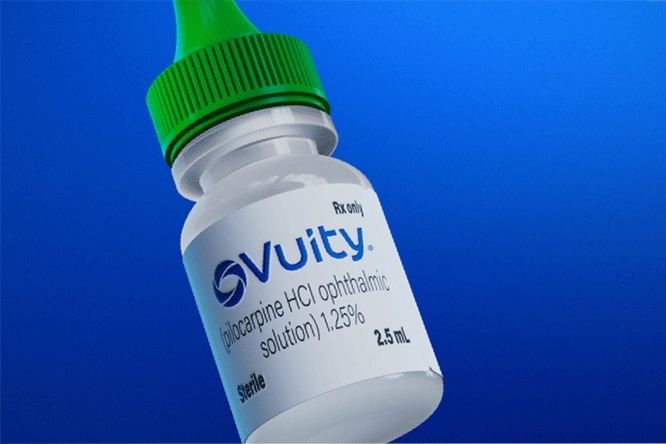
Monoamine Theory of Depression
The monoamine theory of depression posits that the underlying cause of depressive disorders is linked to a deficiency in certain neurotransmitters in the brain, specifically serotonin, norepinephrine, and dopamine. This theory emerged from observations made in the mid-20th century when it was noted that some medications affecting these neurotransmitters had significant impacts on mood.
Historical Context
The origins of the monoamine theory can be traced back to the 1950s when researchers observed that patients taking reserpine, a drug used to treat high blood pressure, often developed severe depression as a side effect. Reserpine works by depleting monoamines—neurotransmitters such as serotonin and norepinephrine—by preventing them from being stored in vesicles within neurons. This depletion leads to reduced availability of these neurotransmitters for release into synaptic gaps, impairing neuronal communication and potentially contributing to depressive symptoms.
Conversely, another drug called isoniazid was found to alleviate depression in some tuberculosis patients. Isoniazid inhibits monoamine oxidase (MAO), an enzyme responsible for breaking down monoamines. By inhibiting MAO, isoniazid increases the levels of available monoamines in the brain, which correlated with improvements in mood.
Mechanism of Action
The mechanism behind the monoamine theory suggests that low levels of serotonin and norepinephrine are directly associated with depressive symptoms. Antidepressants developed based on this hypothesis primarily aim to increase the availability of these neurotransmitters:
- Monoamine Oxidase Inhibitors (MAOIs): These drugs inhibit MAO, leading to increased levels of monoamines.
- Tricyclic Antidepressants (TCAs): These medications block the reuptake of norepinephrine and serotonin into neurons, thereby increasing their levels in the synaptic gap.
- Selective Serotonin Reuptake Inhibitors (SSRIs): A more modern class of antidepressants that specifically inhibit the reuptake of serotonin.
These treatments have been shown to alleviate depressive symptoms by enhancing neurotransmission involving these key monoamines.
Current Understanding and Limitations
Despite its historical significance and clinical utility, the monoamine theory has faced scrutiny over time. While many antidepressants are effective at increasing levels of serotonin and norepinephrine, research has not consistently demonstrated a direct correlation between low levels of these neurotransmitters and clinical depression across all patients. Some studies indicate that while antidepressant medications require intact monoamine systems for their therapeutic effects, they do not necessarily address all aspects or causes of depression.
Moreover, experiments involving induced monoamine depletion have shown mixed results; for instance, healthy individuals may not develop depression when their monoamine levels are lowered, suggesting that other factors contribute significantly to mood disorders.
In conclusion, while the monoamine theory provides a foundational understanding of one aspect of depression’s neurobiology and has guided treatment approaches for decades, it is increasingly recognized as part of a more complex interplay involving genetic, environmental, psychological factors alongside neurochemical changes.
Classification of Antidepressants
Antidepressants are categorized into several classes based on their mechanisms of action and the neurotransmitters they influence. Understanding these classifications is crucial for determining the appropriate treatment for depression and other mental health conditions. Here’s a detailed breakdown of the major classes of antidepressants:
1. Selective Serotonin Reuptake Inhibitors (SSRIs)
SSRIs are the most commonly prescribed class of antidepressants and are typically the first-line treatment for depression. They work by selectively inhibiting the reuptake of serotonin in the brain, thereby increasing its availability. This increase in serotonin levels helps improve mood and alleviate symptoms of depression. Common SSRIs include:
- Citalopram (Celexa)
- Escitalopram (Lexapro)
- Fluoxetine (Prozac)
- Fluvoxamine (Luvox)
- Sertraline (Zoloft)
2. Serotonin and Norepinephrine Reuptake Inhibitors (SNRIs)
SNRIs function similarly to SSRIs but also inhibit the reuptake of norepinephrine, another neurotransmitter involved in mood regulation. By increasing both serotonin and norepinephrine levels, SNRIs can be effective for treating major depressive disorder as well as anxiety disorders. Notable SNRIs include:
- Venlafaxine (Effexor XR)
- Duloxetine (Cymbalta)
3. Tricyclic Antidepressants (TCAs)
TCAs are an older class of antidepressants that work by blocking the reuptake of norepinephrine and serotonin, but they also affect other neurotransmitters, which can lead to a wider range of side effects. While effective, they are generally not used as first-line treatments due to their side effect profile. Examples include:
- Amitriptyline
- Nortriptyline (Pamelor)
- Imipramine (Tofranil)
4. Monoamine Oxidase Inhibitors (MAOIs)
MAOIs work by inhibiting monoamine oxidase, an enzyme that breaks down neurotransmitters such as serotonin, norepinephrine, and dopamine in the brain. This leads to increased levels of these neurotransmitters but requires dietary restrictions to avoid potentially dangerous interactions with certain foods containing tyramine. Common MAOIs include:
- Phenelzine (Nardil)
- Tranylcypromine (Parnate)
5. Atypical Antidepressants
This category includes various antidepressants that do not fit neatly into the other classifications but still have antidepressant effects through different mechanisms. These medications may target multiple neurotransmitter systems or have unique actions that differentiate them from traditional classes. Examples include:
- Bupropion (Wellbutrin), which primarily affects dopamine and norepinephrine
- Mirtazapine (Remeron), which enhances norepinephrine and serotonin transmission
Each class has its own set of potential side effects and interactions, making it essential for healthcare providers to consider individual patient needs when prescribing these medications.
The classification system helps guide treatment decisions based on factors such as symptom profiles, previous treatment responses, co-existing medical conditions, and potential side effects.
Pharmacodynamic Properties and Side Effects of Tricyclic Antidepressants
Tricyclic antidepressants (TCAs) are a class of medications primarily used to treat major depressive disorder and certain anxiety disorders. They are named for their chemical structure, which consists of three interconnected rings. Common examples include amitriptyline, nortriptyline, and imipramine.
Pharmacodynamic Properties
The pharmacodynamics of TCAs involve several mechanisms that contribute to their antidepressant effects:
- Monoamine Reuptake Inhibition: TCAs primarily exert their effects by inhibiting the reuptake of neurotransmitters such as serotonin (5-HT) and norepinephrine (NE). This leads to increased levels of these neurotransmitters in the synaptic cleft, enhancing mood and alleviating depressive symptoms. The balance between serotonin and norepinephrine is crucial for mood regulation.
- Antagonism of Receptors: In addition to reuptake inhibition, TCAs also interact with various receptors:
- Histamine H1 Receptors: Blockade can lead to sedation.
- Muscarinic Acetylcholine Receptors: Anticholinergic effects can result in dry mouth, constipation, urinary retention, and blurred vision.
- Alpha-1 Adrenergic Receptors: Antagonism may cause orthostatic hypotension due to vasodilation.
- Impact on Other Neurotransmitter Systems: Some TCAs also affect dopamine pathways and other neurochemical systems, although these effects are less pronounced than those on serotonin and norepinephrine.
- Time Course of Action: The therapeutic effects of TCAs typically take several weeks to manifest fully, which is common among many antidepressants due to the time required for neuroadaptive changes in the brain.
- Dosing Considerations: Due to their pharmacokinetic profiles, TCAs often require careful dosing adjustments based on individual patient response and tolerability.
Side Effects of Tricyclic Antidepressants
While effective for many patients, TCAs are associated with a range of side effects due to their broad pharmacological activity:
- Anticholinergic Effects: These include dry mouth, constipation, urinary retention, blurred vision, and cognitive impairment. Elderly patients are particularly vulnerable to these side effects.
- Sedation: Many TCAs cause sedation due to their antihistaminic properties. This can be beneficial for patients with insomnia but may impair daytime functioning.
- Cardiovascular Effects: TCAs can cause orthostatic hypotension (a drop in blood pressure upon standing), tachycardia (increased heart rate), and potential arrhythmias due to sodium channel blockade at higher doses.
- Weight Gain: Long-term use may lead to significant weight gain in some patients due to metabolic changes or increased appetite.
- Sexual Dysfunction: Patients may experience decreased libido or difficulties with sexual performance as a result of TCA treatment.
- Withdrawal Symptoms: Discontinuation after prolonged use can lead to withdrawal symptoms such as nausea, headache, malaise, and irritability if not tapered properly.
- Risk of Overdose: Due to their narrow therapeutic index compared to newer antidepressants like SSRIs or SNRIs, overdoses can be particularly dangerous and potentially fatal; symptoms may include seizures, cardiac arrhythmias, or coma.
- Other Potential Side Effects: These may include dizziness, fatigue, tremors, sweating abnormalities, and increased risk of falls in older adults.
In summary, while tricyclic antidepressants can be effective treatments for depression and anxiety disorders through their multifaceted pharmacodynamic actions—primarily involving neurotransmitter reuptake inhibition—they also carry a significant burden of side effects that must be carefully managed by healthcare providers.
Therapeutic Use and Toxic Effects of MAO Inhibitors
Monoamine oxidase inhibitors (MAOIs) are a class of antidepressant medications that function by inhibiting the activity of monoamine oxidase, an enzyme responsible for breaking down neurotransmitters such as serotonin, norepinephrine, and dopamine in the brain. By preventing the degradation of these neurotransmitters, MAOIs increase their availability in the synaptic cleft, which can lead to improved mood and alleviation of depressive symptoms.
Therapeutic Uses
- Depression: MAOIs are primarily used to treat major depressive disorder (MDD), particularly in cases where patients have not responded adequately to other classes of antidepressants such as selective serotonin reuptake inhibitors (SSRIs) or tricyclic antidepressants (TCAs). They are especially effective for atypical depression, characterized by mood reactivity and specific symptoms like increased sleep and appetite.
- Anxiety Disorders: Some studies suggest that MAOIs may also be beneficial in treating anxiety disorders, including panic disorder and social anxiety disorder. The anxiolytic effects may stem from increased levels of norepinephrine and serotonin.
- Other Psychiatric Conditions: Beyond depression and anxiety, MAOIs have been explored for use in conditions such as obsessive-compulsive disorder (OCD) and post-traumatic stress disorder (PTSD), although their use is less common in these contexts.
- Parkinson’s Disease: Certain MAOIs, particularly selegiline, are utilized in the management of Parkinson’s disease due to their neuroprotective properties and ability to enhance dopaminergic activity.
- Chronic Pain Management: There is emerging evidence suggesting that some MAOIs may help alleviate chronic pain conditions through their influence on neurotransmitter systems involved in pain perception.
Toxic Effects
While MAOIs can be effective therapeutic agents, they also carry a risk of significant toxic effects:
- Hypertensive Crisis: One of the most serious risks associated with MAOI therapy is hypertensive crisis, which can occur when patients consume tyramine-rich foods (e.g., aged cheeses, cured meats) or certain medications while on an MAOI. Tyramine normally gets broken down by monoamine oxidase; however, its accumulation can lead to dangerously high blood pressure.
- Serotonin Syndrome: When combined with other serotonergic drugs (such as SSRIs or certain analgesics), there is a risk of serotonin syndrome—a potentially life-threatening condition characterized by confusion, agitation, rapid heart rate, fluctuating blood pressure, dilated pupils, muscle rigidity, and fever.
- Orthostatic Hypotension: Patients taking MAOIs may experience orthostatic hypotension—an abrupt drop in blood pressure upon standing—which can lead to dizziness or fainting.
- Weight Gain: Long-term use of MAOIs has been associated with weight gain due to changes in appetite regulation influenced by altered neurotransmitter levels.
- Sleep Disturbances: Some individuals may experience insomnia or other sleep-related issues while on MAOI therapy due to alterations in neurotransmitter balance affecting sleep architecture.
- Liver Toxicity: Rarely, some MAOIs have been linked to hepatotoxicity; thus monitoring liver function during treatment is advisable.
In conclusion, while monoamine oxidase inhibitors offer valuable therapeutic options for various psychiatric conditions—especially treatment-resistant depression—they require careful management due to their potential for severe adverse effects. Clinicians must educate patients about dietary restrictions and possible drug interactions to mitigate risks effectively.
Therapeutic Use of SSRIs and SNRIs
Selective serotonin reuptake inhibitors (SSRIs) and serotonin-norepinephrine reuptake inhibitors (SNRIs) are primarily used to treat various mental health conditions. Their therapeutic applications include:
- Depression: Both SSRIs and SNRIs are commonly prescribed for major depressive disorder (MDD). SSRIs, such as fluoxetine and sertraline, are often the first-line treatment due to their favorable side effect profile. SNRIs, like venlafaxine and duloxetine, may be considered when patients do not respond adequately to SSRIs or have specific symptoms such as fatigue or pain.
- Anxiety Disorders: SSRIs are effective in treating generalized anxiety disorder (GAD), panic disorder, social anxiety disorder, and obsessive-compulsive disorder (OCD). SNRIs can also be beneficial for anxiety disorders, particularly GAD.
- Post-Traumatic Stress Disorder (PTSD): Both classes of medications can help alleviate symptoms of PTSD, including intrusive thoughts and hyperarousal.
- Chronic Pain Conditions: SNRIs have been found effective in managing chronic pain syndromes such as fibromyalgia and diabetic neuropathy due to their action on norepinephrine, which plays a role in pain modulation.
- Bipolar Disorder: While not typically used as monotherapy for bipolar disorder due to the risk of inducing mania, SSRIs may be used cautiously during depressive episodes in conjunction with mood stabilizers.
- Other Uses: Off-label uses include treatment for conditions like premenstrual dysphoric disorder (PMDD), eating disorders, and sleep disturbances.
Toxic Effects of SSRIs and SNRIs
While SSRIs and SNRIs can provide significant therapeutic benefits, they also carry potential toxic effects that can impact patient safety:
- Common Side Effects:
- Nausea
- Dizziness
- Insomnia or sedation
- Weight changes
- Sexual dysfunction
- Serotonin Syndrome: This is a potentially life-threatening condition resulting from excessive serotonergic activity in the central nervous system. Symptoms include agitation, confusion, rapid heart rate, dilated pupils, muscle rigidity, and severe hypertension. It can occur when SSRIs or SNRIs are taken in combination with other serotonergic drugs.
- Withdrawal Symptoms: Discontinuation syndrome can occur when stopping these medications abruptly or after long-term use. Symptoms may include flu-like symptoms, insomnia, nausea, imbalance, sensory disturbances (often described as “brain zaps”), and increased anxiety or depression.
- Increased Risk of Suicidal Thoughts: Particularly in children and adolescents, both SSRIs and SNRIs have been associated with an increased risk of suicidal ideation or behavior during the initial treatment phase or when doses are adjusted.
- Cardiovascular Effects: Some SNRIs can increase blood pressure due to their norepinephrine activity; therefore, they may not be suitable for individuals with certain cardiovascular conditions.
- Allergic Reactions: Though rare, some individuals may experience serious allergic reactions that require immediate medical attention.
- Manic Episodes: In patients with bipolar disorder who take these medications without appropriate mood stabilization therapy, there is a risk of triggering manic episodes.
In summary, while SSRIs and SNRIs play an essential role in treating various mental health conditions effectively, it is crucial for healthcare providers to monitor patients closely for both therapeutic efficacy and potential adverse effects throughout the treatment process.
Major Drug Interactions Associated with the Use of Antidepressant Drugs
Antidepressants are a class of medications commonly used to treat depression and other mood disorders. However, they can interact with various other drugs, leading to potentially serious side effects or reduced efficacy. Understanding these interactions is crucial for safe prescribing and patient management. Below are the major categories of drug interactions associated with antidepressants:
1. Serotonin Syndrome
One of the most critical interactions involves the risk of serotonin syndrome, a potentially life-threatening condition caused by excessive serotonergic activity in the nervous system. This can occur when antidepressants that increase serotonin levels are combined with other serotonergic agents. Key combinations include:
- Selective Serotonin Reuptake Inhibitors (SSRIs): When SSRIs like fluoxetine or sertraline are taken with other SSRIs, certain analgesics (like tramadol), triptans (used for migraines), or herbal supplements such as St. John’s Wort, there is an increased risk of serotonin syndrome.
- Monoamine Oxidase Inhibitors (MAOIs): Combining MAOIs with SSRIs or other serotonergic drugs can lead to severe reactions.
Symptoms of serotonin syndrome include confusion, agitation, rapid heart rate, dilated pupils, muscle rigidity, and in severe cases, seizures or coma.
2. Increased Bleeding Risk
Certain antidepressants can increase the risk of bleeding when taken with anticoagulants or antiplatelet agents. Notably:
- SSRIs and SNRIs: Medications like fluoxetine and venlafaxine may inhibit platelet aggregation due to their effects on serotonin uptake in platelets. This interaction is particularly concerning when combined with drugs such as warfarin or non-steroidal anti-inflammatory drugs (NSAIDs), which also affect bleeding risk.
Patients taking these combinations should be monitored closely for signs of bleeding.
3. Cardiovascular Effects
Some antidepressants can have significant cardiovascular effects when used alongside other medications that affect heart rhythm or blood pressure:
- Tricyclic Antidepressants (TCAs): Drugs like amitriptyline can cause arrhythmias and should be used cautiously in patients taking antiarrhythmic medications.
- SNRIs: Medications such as duloxetine may elevate blood pressure; thus, caution is advised when combined with antihypertensive agents.
Monitoring blood pressure and cardiac function is essential in these cases.
4. Drug Metabolism Interactions
Antidepressants often interact with cytochrome P450 enzymes involved in drug metabolism:
- Fluoxetine and Paroxetine: These SSRIs are potent inhibitors of CYP2D6, which can lead to increased plasma concentrations of drugs metabolized by this pathway (e.g., certain antipsychotics and beta-blockers).
- Bupropion: This medication is primarily metabolized by CYP2B6; co-administration with drugs that inhibit this enzyme can increase bupropion levels and raise the risk of seizures.
Understanding these metabolic pathways helps prevent adverse drug reactions.
5. Alcohol Interaction
The use of alcohol while on antidepressants can exacerbate side effects such as sedation and impair cognitive function:
- All Classes of Antidepressants: Alcohol may enhance the sedative effects of many antidepressants, leading to increased drowsiness or dizziness. This combination should generally be avoided.
Patients should be counseled about the risks associated with alcohol consumption during treatment.
Conclusion
In summary, major drug interactions associated with antidepressant use include risks for serotonin syndrome, increased bleeding potential, cardiovascular effects, alterations in drug metabolism via cytochrome P450 enzymes, and enhanced sedation when combined with alcohol. Clinicians must carefully evaluate a patient’s entire medication regimen to mitigate these risks effectively.
Pharmacokinetics and Pharmacodynamics of Lithium
Pharmacokinetics of Lithium
Lithium is a unique medication used primarily as a mood stabilizer in the treatment of bipolar disorder. Its pharmacokinetics involves several key processes: absorption, distribution, metabolism, and excretion.
- Absorption: Lithium is well absorbed from the gastrointestinal tract after oral administration. Peak plasma concentrations typically occur within 1 to 3 hours post-ingestion. The bioavailability of lithium can be affected by food intake; for instance, taking it with meals may delay absorption but does not significantly alter the overall extent of absorption.
- Distribution: Once absorbed, lithium distributes widely throughout the body. It has a volume of distribution (Vd) ranging from 0.6 to 0.9 L/kg, indicating that it is distributed in total body water and across various tissues. Lithium crosses the blood-brain barrier and can accumulate in brain tissue, which is crucial for its therapeutic effects.
- Metabolism: Unlike many other drugs, lithium is not metabolized by the liver; instead, it remains unchanged in the body. This characteristic contributes to its narrow therapeutic index (the range between effective and toxic doses), which is typically between 0.6 to 1.2 mEq/L.
- Excretion: Lithium is primarily excreted unchanged through the kidneys. Renal clearance of lithium can be influenced by factors such as hydration status and concurrent use of diuretics or non-steroidal anti-inflammatory drugs (NSAIDs). Because renal function significantly affects lithium levels, regular monitoring of kidney function and serum lithium levels is essential during treatment.
Pharmacodynamics of Lithium
The pharmacodynamics of lithium involves its mechanisms of action at the cellular level, although its exact mechanism remains incompletely understood.
- Neurotransmitter Modulation: Lithium influences neurotransmitter systems by altering sodium transport across cell membranes in nerve and muscle cells. This alteration affects neurotransmitter release and reuptake processes, particularly for serotonin (5-HT), norepinephrine, and dopamine—key players in mood regulation.
- Inositol Signaling Pathway: One proposed mechanism involves inhibition of inositol monophosphatase (IMPase), an enzyme involved in phosphatidylinositol signaling pathways that are critical for neurotransmission. By inhibiting this enzyme, lithium may reduce levels of inositol, thereby affecting second messenger systems that modulate neuronal excitability and synaptic transmission.
- Protein Kinase C Activity: Lithium also appears to reduce protein kinase C (PKC) activity, which may influence gene expression related to neurotransmission and neuroprotection.
- Neuroprotective Effects: There is evidence suggesting that lithium has neuroprotective properties that may contribute to its efficacy in preventing mood episodes over time. These effects include promoting neurogenesis and enhancing synaptic plasticity.
- Side Effects: Common side effects associated with lithium include tremor, nausea, fatigue, increased thirst (polydipsia), slowed thinking, weight gain, hypothyroidism, diabetes insipidus, and potential toxicity if serum levels exceed therapeutic ranges.
In summary, understanding both the pharmacokinetics and pharmacodynamics of lithium is crucial for optimizing its use as a mood stabilizer in patients with bipolar disorder while minimizing risks associated with its narrow therapeutic index.







